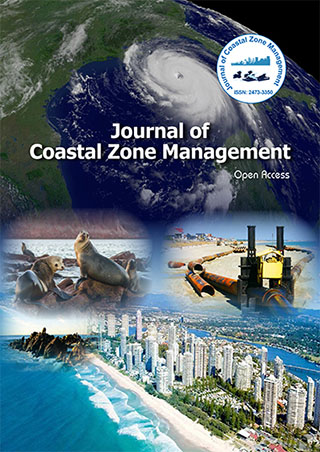Indexed In
- SafetyLit
- RefSeek
- Hamdard University
- EBSCO A-Z
- OCLC- WorldCat
- Publons
Useful Links
Share This Page
Journal Flyer

Open Access Journals
- Agri and Aquaculture
- Biochemistry
- Bioinformatics & Systems Biology
- Business & Management
- Chemistry
- Clinical Sciences
- Engineering
- Food & Nutrition
- General Science
- Genetics & Molecular Biology
- Immunology & Microbiology
- Medical Sciences
- Neuroscience & Psychology
- Nursing & Health Care
- Pharmaceutical Sciences
Perspective - (2023) Volume 26, Issue 6
Fundamental Significance of the Ecological Factors of Coastal Wetlands
Garvel Camer*Received: 01-Nov-2023, Manuscript No. JCZM-23-23802; Editor assigned: 03-Nov-2023, Pre QC No. JCZM-23-23802 (PQ); Reviewed: 24-Nov-2023, QC No. JCZM-23-23802; Revised: 01-Dec-2023, Manuscript No. JCZM-23-23802 (R); Published: 08-Dec-2023, DOI: 10.35248/2473-3350.23.26.595
Description
Coastal wetlands, often referred to as the guardians of the shoreline, stand at the edge of two worlds, where land and water converge a delicate ballet of ecological marvels. "The fundamental significance of ecological factors of coastal wetlands" these are seeks to illuminate the intricate beauty and importance of these ecosystems, exploring the symbiotic relationships that thrive within their unique landscapes.
The term "conservator" which aptly captures the essence of coastal wetlands as protectors of coastlines against the erosive forces of tides and storms. These ecosystems, comprising marshes, swamps, and estuaries, act as natural buffers, mitigating the impact of rising sea levels and storm surges. The resilient nature of coastal wetlands is exemplified in their ability to absorb and dissipate the energy of waves, shielding coastal communities from the destructive forces of nature.
One of the defining features of coastal wetlands is their dynamic nature, constantly shaped by the ebb and flow of tides. This perpetual cycle of inundation and exposure creates a mosaic of habitats, fostering biodiversity that is both unique and significant to the overall health of the ecosystem. The adaptability of flora and fauna to these changing conditions is a testament to the resilience embedded in coastal wetlands.
Mangroves, with their distinctive aerial roots, play a pivotal role in stabilizing sediment and providing essential habitats for a myriad of marine species. These tidal forests serve as nurseries for juvenile fish and act as a significant link in the marine food chain. Similarly, salt marshes, adorned with their characteristic grasses, contribute to the ecological richness by providing breeding grounds for various bird species and acting as natural filters, trapping sediments and pollutants.
The ecological factors of coasts, coastal wetlands extending their role as protective barriers and nurseries. These dynamic environments are integral to nutrient cycling and carbon sequestration. The intricate interactions between vegetation, microbes, and water create a finely tuned system that purifies water, captures carbon dioxide, and supports the overall health of coastal ecosystems.
However, the guardianship of coastal wetlands is facing unprecedented challenges in the form of human-induced pressures. Urbanization, pollution, and climate change threaten the delicate balance of these ecosystems. Recognizing the fragility of coastal wetlands is not just a scientific imperative but a moral responsibility to protect the diverse life forms that depend on them.
Significantly of this, as the readers to explaining the ecological factors of coastal wetlands, providing a glimpse into the intricate web of life that flourishes within these dynamic landscapes. It encourages a deeper understanding of the interconnected relationships between species, the role of wetlands in climate resilience, and the urgency of conservation efforts. The publication serves as recognizing for the collective action, urging communities, policymakers, and scientists to unite in safeguarding these vital ecosystems.
In conclusion, "The fundamental significance of the ecological factors of coastal wetlands" is a path into these resilient wetlands, landscapes, where nature's guardianship manifests in myriad forms. By appreciating, understanding, and actively participating in the preservation of coastal wetlands, we can ensure that these ecological marvels continue to thrive, fulfilling their vital roles as protectors of the edge for generations to come.
Citation: Camer G (2023) Fundamental Significance of the Ecological Factors of Coastal Wetlands. J Coast Zone Manag. 26.595.
Copyright: © 2023 Camer G. This is an open-access article distributed under the terms of the Creative Commons Attribution License, which permits unrestricted use, distribution, and reproduction in any medium, provided the original author and source are credited.
